SAN AGUSTIN

Snapshot
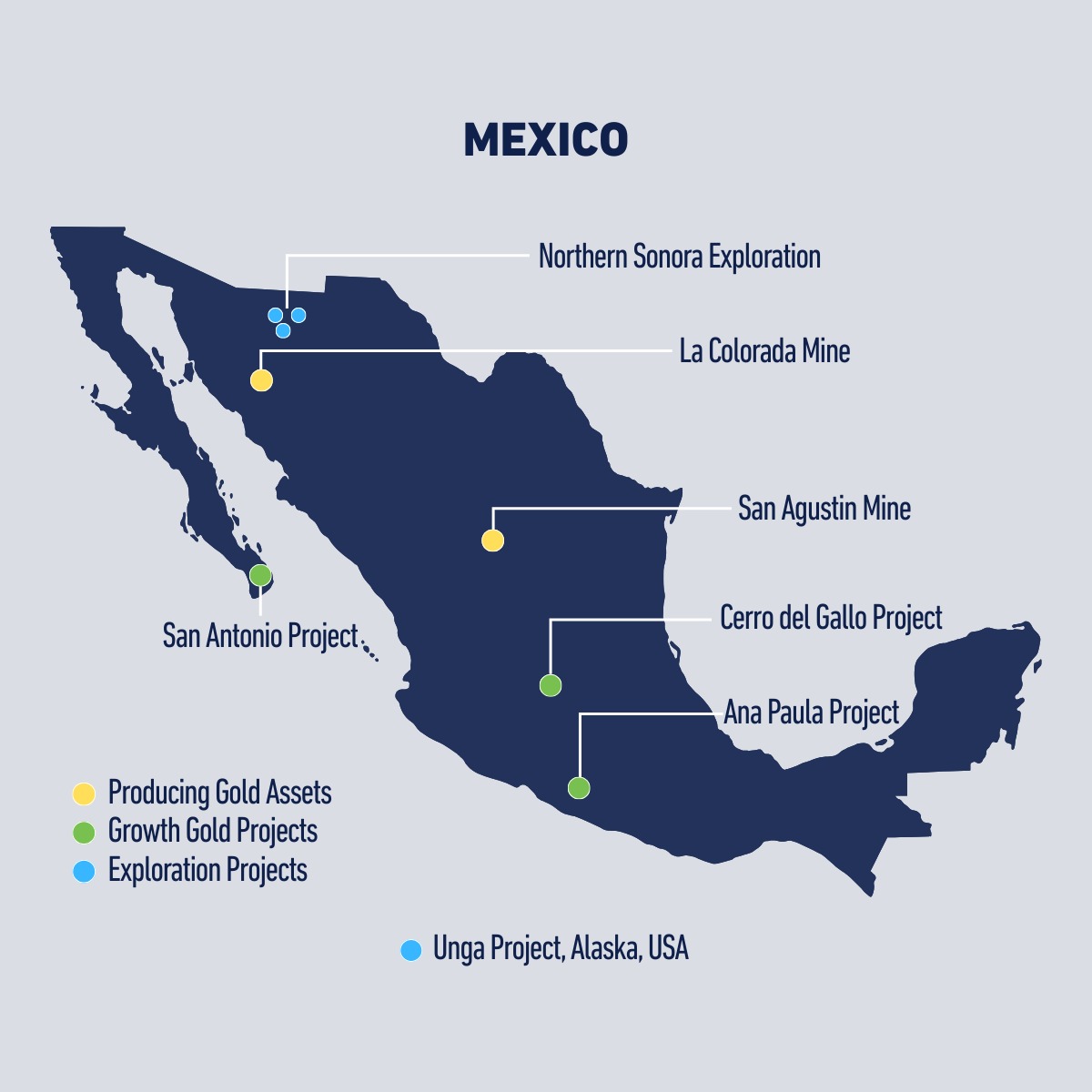
Location: Durango, Mexico
Status: Operating
Ownership: 100%
Mine: Open pit heap leach
2025 Guidance (January to October 2025)
Production: 8,500 - 11,000 GEO
AISC: $1,850-$1,950 per GEO
Metals: Gold, Silver
Royalty: Oxides 0%, Sulphides 2%
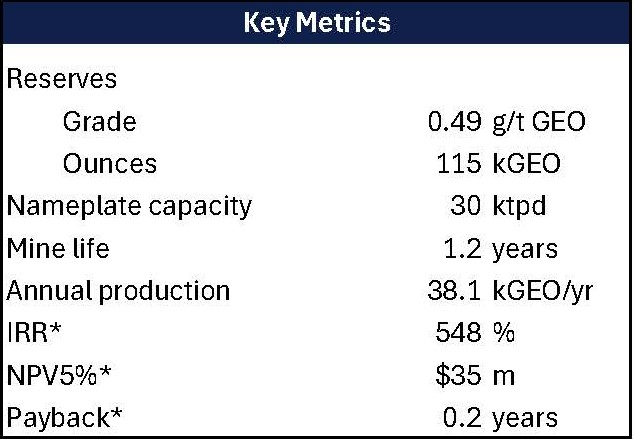


Overview
The San Agustin mine is located 100km north of the city of Durango in the state of Durango, Mexico. The open pit heap leach mine is situated on a 5,884-ha land package. It is currently in production from residual leaching of material on the pad but with a plan to restart mining later this year from the Corner area. This will provide 14 months of mine life producing 44.5k GEO with opportunities to extend production through exploration.
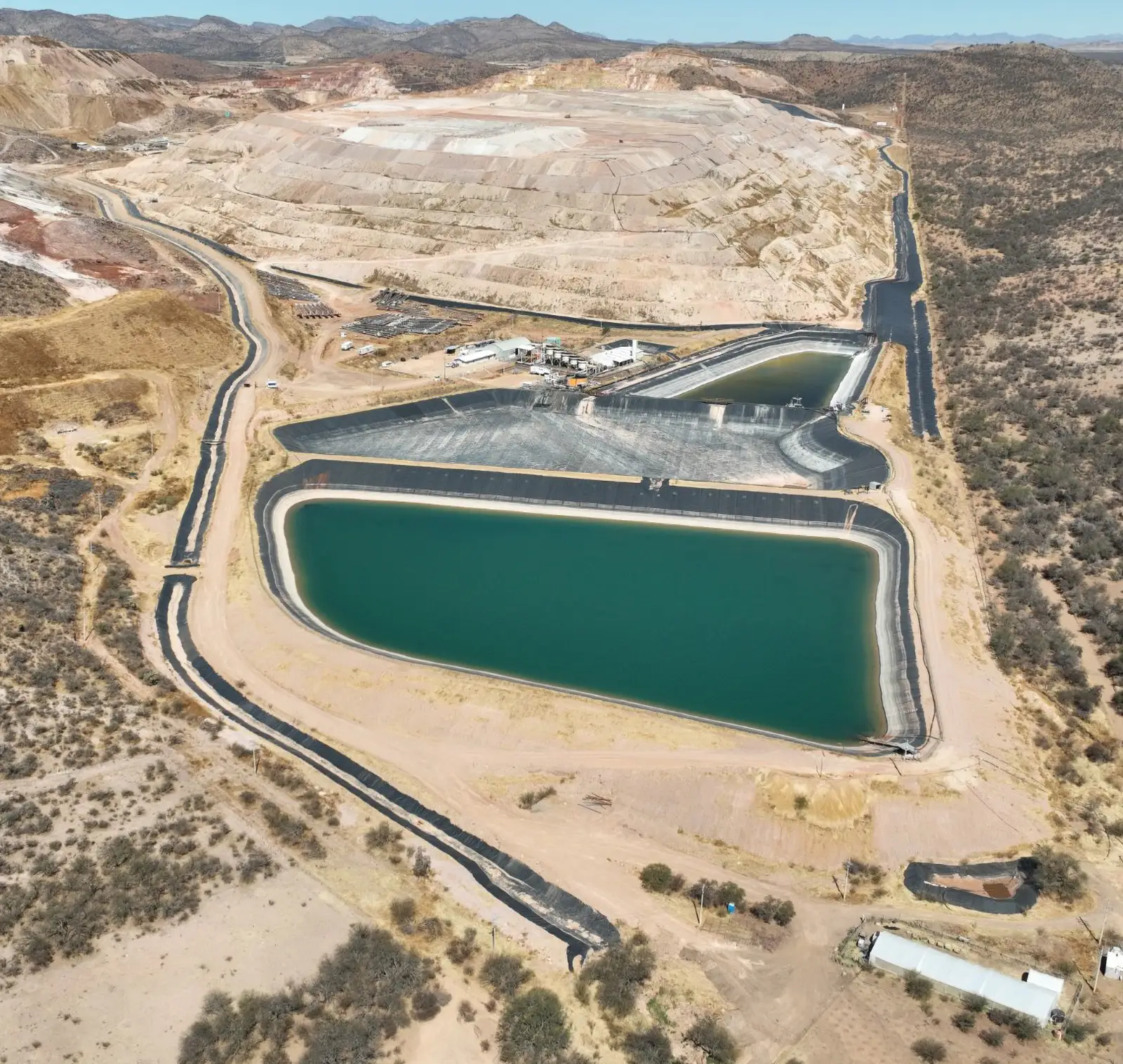


Location and Infrastructure
Access from Durango to the mine is via Highway 45 with the last 10km along an all-weather gravel road. Durango is a major city with a population of 600,000, an international airport with daily flights to Mexico City and Dallas, Texas and most mining services. The mine is connected to the country wide power grid with a 34.5 kV power line and water supplied from nearby wells.
Facilities at the mine site include an open pit, two crushing lines with a combined nameplate capacity of 30,000 tonnes per day, a heap leach pad, Merrill-Crowe plant, truck shop and a waste dump. Loaded carbon from the operation gets trucked to the processing facilities at La Colorada for final production of the dore bars.
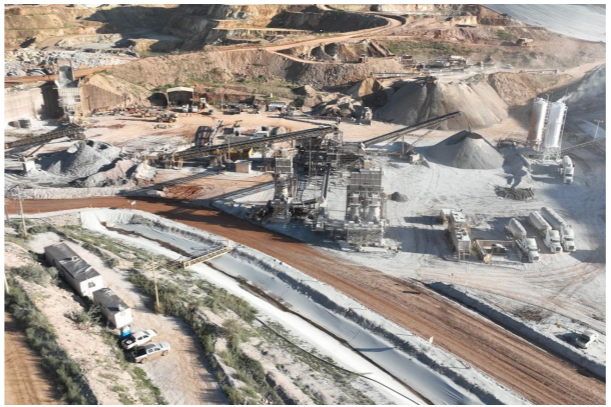
History
.jpg)
In the 1980s, small scale exploration focused on narrow, high-grade veins with a93m shaft and some tunnels supporting this work. Modern exploration began in1996 with Monarch Mining conducting soil and rock chip sampling followed by10,356m of drilling. Between 2002 and 2013, Silver Standard resources conducted follow-up surface sampling and drilling on gold anomalies previously identified before optioning it to Geologix Resources in 2006. This company did extensive mapping and sampling work through to 2009 which incuded more than 40,700m of drilling before returning it to Silver Standard.
Argonaut Gold acquired the project in 2013 with construction of the oxide heap leach mine starting in 2016, achieving commercial production in late 2017. San Agustin produced 245koz of gold and 1.1Moz of silver through to August 2024when mining activities ceased but with production continuing from residual leaching. Heliostar Metals acquired the project in November 2024.


Resources & Reserves
Mineral Reserve Estimate

Mineral Resource Estimate
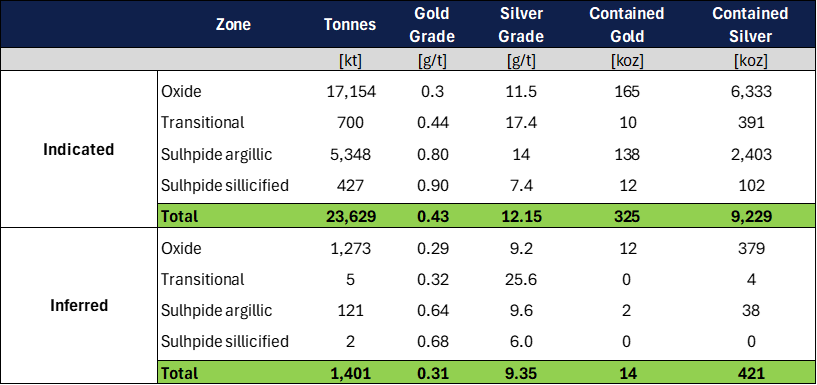


Geology
San Agustin is in the Sierra Madre Occidental. Regionally, the geology is comprised of mica schists and mylonites overlain by the shales, sandstones and thin bedded limestones. On top of this there is the sequence of volcanics as is typical of the area. These units are faulted and intruded by still younger volcanic rocks.
San Agustin is a porphyry deposit, overprinted by an epithermal event. The San Agustin deposit is associated with an igneous, quartz monzonite dome complex that intrudes the country rock. Fracture systems follow two main trends that run northeast and northwest with mineralization following lithological control sat a local scale. These fracture system trends host the bulk of the oxide mineralization at San Agustin.
Gold and silver mineralization occurs in a widespread system of sulphide-rich veins, veinlets and fissure fillings. The gold distribution is similar to a disseminated deposit. The current reserves are in an oxide zone that starts from surface and extends 65-100 metres deep. Beneath this is a large, polymetallic sulphide deposit. It extends to 400m below surface (open at depth)that is not part of the current resource base. There are also known (but untested)silver veins on the property.
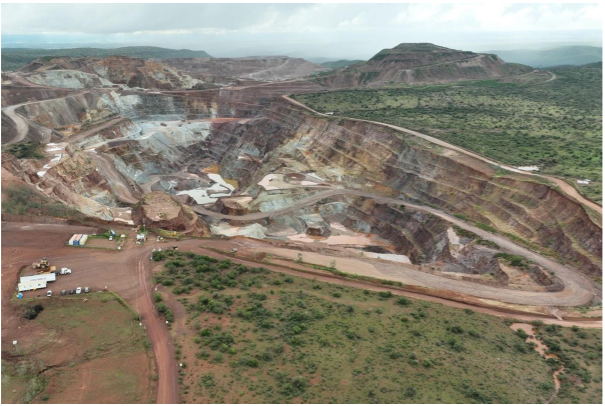


Production Plan
The mine currently produces gold from re-leaching ore already on the pad. Heliostar's 2025 technical study shows a plan to put the mine back into primary production from mining the Corner area. Argonaut Gold did not mine this area due to the lack of a land access agreement with the landowner, however, Heliostar has reached an agreement to purchase the land from the current owner. The company has recently acquired all permissions required for this pushback and expects to be producing gold from the Corner area starting in4Q 2025.
The technical report outlines 44.5koz of gold produced over a 14 month mine life at an AISC of $1,605/GEO, benefiting from a LOM strip ratio of just 0.9:1.The study shows an initial capex of $4.15m, but including land payment and the initial working capital requirements (mainly the inventory build up on the pad during the time lag between stacking ore and initial recovery of gold),management is projecting a ~$10m total outlay to get the mine back into commerical production.
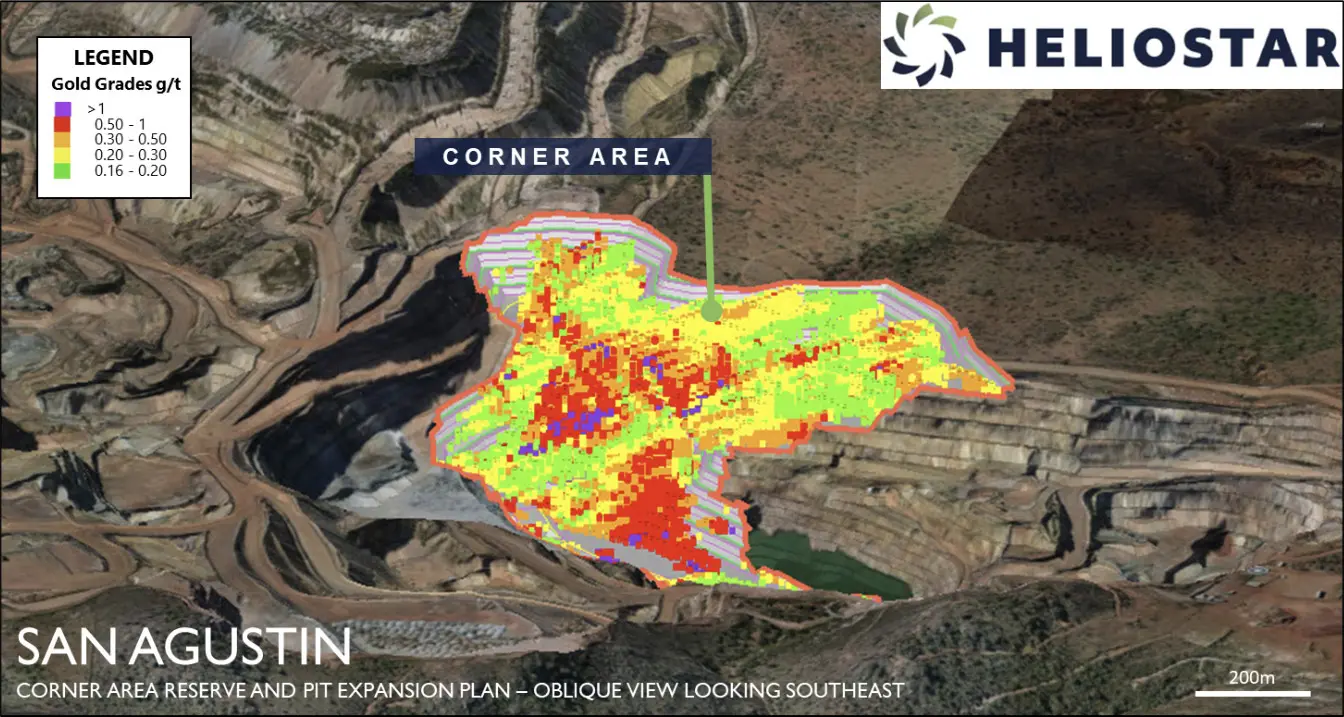


Growth
Oxide Resources
Through step out exploration at the Corner area, the company is targeting an extension to the mine life. A drill program will commence shortly, with management seeing high potential to add an additional 4-10 months of life to the current mine plan.
Sulphides
Beneath the oxide resources lies a large, polymetallic deposit discovered by drilling from previous owners. This presents a longer-term opportunity for Heliostar with a drill program planned to test higher grade structures within the mineralized footprint.
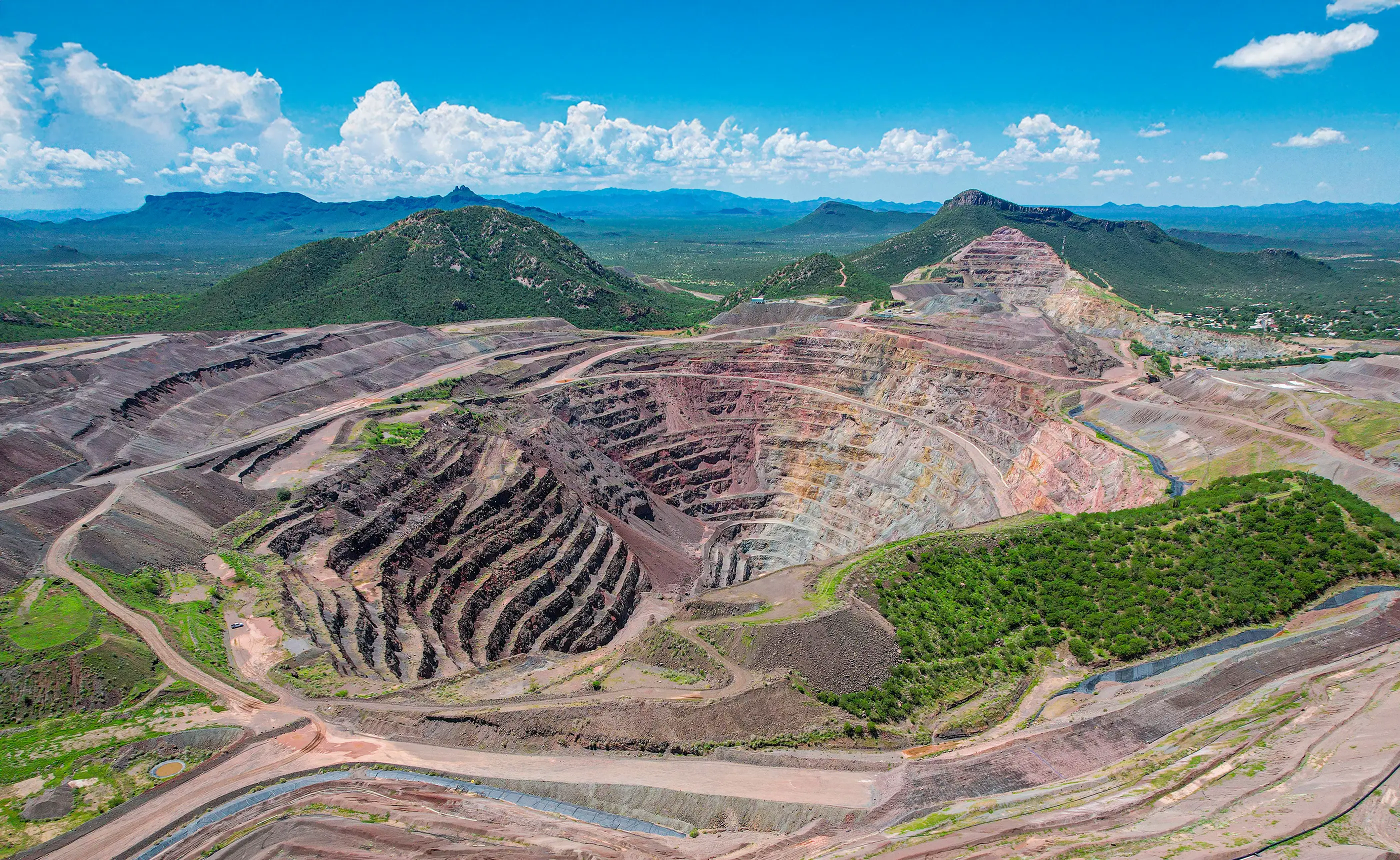
Regional Exploration
The San Agustin land package, exclusive of the El Castillo Mine, comprises 5,884 hectares that have had limited exploration. Heliostar has identified four targets for immediate exploration and development.
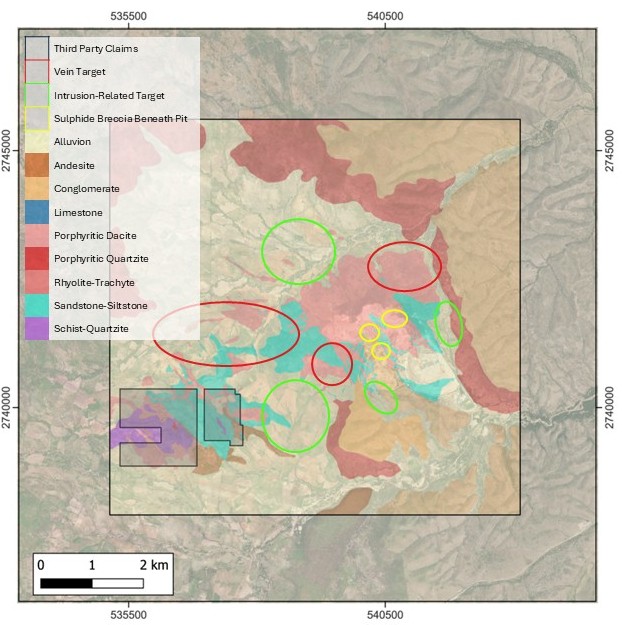


Technical Disclosure
All technical information on the San Agustin Mine is based on a technical report entitled “San Agustin Operations, Durango State, Mexico, NI 43-101 Technical Report” with an effective date of November 30,2024, filed on SEDAR by Heliostar on January 13, 2025 (the “San Agustin Technical Report”). The technical report for the San Agustin Mine was prepared for Heliostar Metals Inc. by Mr. Todd Wakefield, RM SME, Mr. David Thomas, P.Geo., Mr. Jeffrey Choquette, P.E., Mr.Carl Defilippi, RM SME, and Ms. Dawn Garcia, CPG. and all are independent of the Company.


Project News





